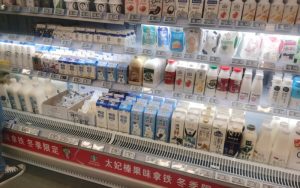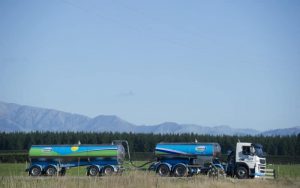
Chinese buyers are returning in force to replenish stocks and helping send global dairy prices higher.
China significantly reduced its imports of dairy products over the past two years compared to previous years, due to softening demand at home and a surge in their own production.
However, Westpac senior economist Michael Gordon says it’s becoming more apparent now that the pullback in their imports has left them significantly understocked, especially for milk powders.
Gordon notes that China’s dairy industry is still struggling with an oversupply of liquid milk, some of which is being dried into powders in order to be able to store it – but it appears they don’t have the capacity to make up for the extent of the shortfall in imports.
“For whole milk powder (WMP) in particular, China has few options for increasing its supply. New Zealand is by far the dominant supplier on the global market, and Fonterra has tilted its product mix away from WMP in the last couple of seasons, in response to the fall in Chinese demand.
“So, the only real way to secure more WMP is to divert it away from other markets. Consequently, we’re seeing buyers from North Asia (largely China) take up an increasing share of the product sold at the Global Dairy Trade auction.”
The last GDT saw the price index jump 1.9% to US$4089/metric tonne, its highest point since July 2022. WMP prices rose 3.25% to US$3826/MT.
Westpac has revised its forecast milk price for the season to $10/kgMS. If achieved, it would be the highest milk price on record and the first double-digit one. However, he cautions that’s not quite the case once we account fro the general rate of inflation.
“It’s certainly above average, but there have been four previous years where the milk price was higher in inflation-adjusted terms. It should also be noted that none of those previous highs were sustained, and in some cases were followed by sharply lower prices in the following season.”
Adjusting for general inflation also understates the degree to which on-farm costs have risen in recent years.
DairyNZ currently estimates a breakeven price of $8.15/kgMS for a typical dairy farm, up from $8.01/kgMS last season.
“That said, a $10 milk price would leave substantial room for farmers to spend and invest more, even after catching up on maintenance and other costs that might have been deferred during the previous tougher season,” says Gordon.
“A $10/kg milk price, along with an increase in milk volumes that is shaping up to be in the order of 2%, would mean around $3.5 billion of additional revenue for Fonterra’s suppliers compared to last season (and $4.5b in total if this experience is repeated across the other dairy companies).
“After allowing for an increase in costs, this suggests about $4b of extra discretionary income for dairy farmers this year, equal to around 1% of GDP.”
Another factor pushing dairy prices up is production constraints, especially in Europe and the US – two of the world’s biggest milk producers.
You can now read the most important #news on #eDairyNews #Whatsapp channels!!!
🇺🇸 eDairy News INGLÊS: https://whatsapp.com/channel/0029VaKsjzGDTkJyIN6hcP1K

























